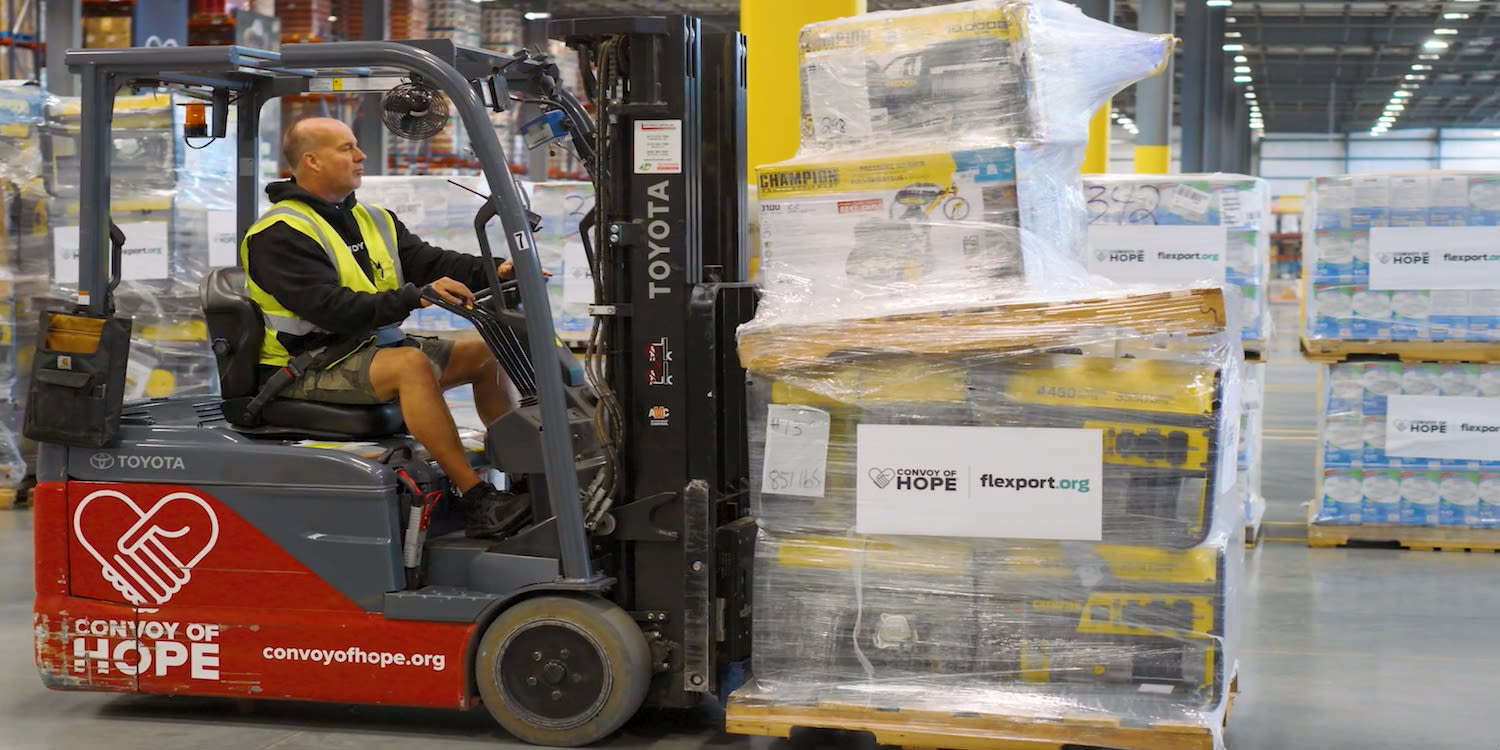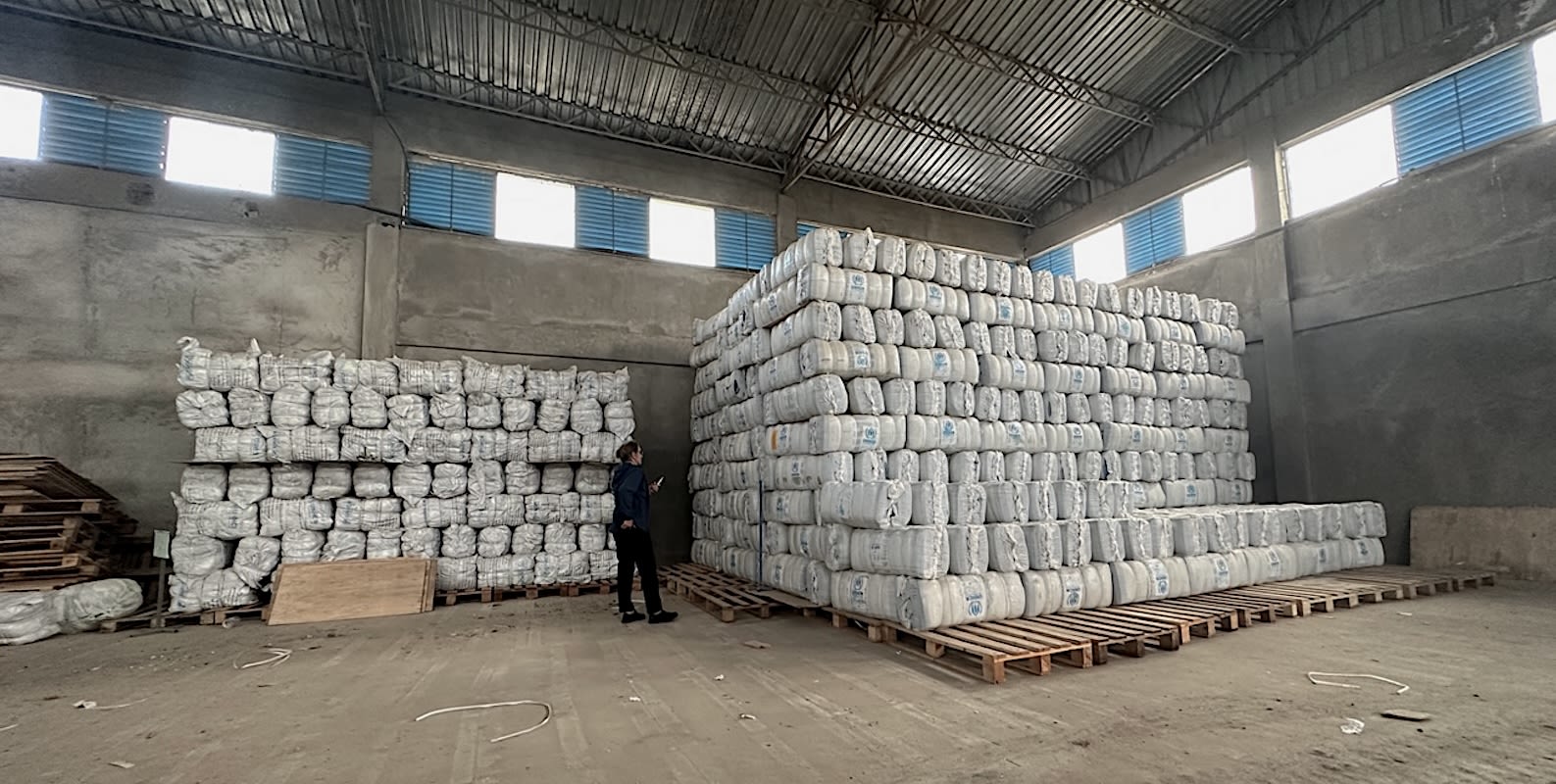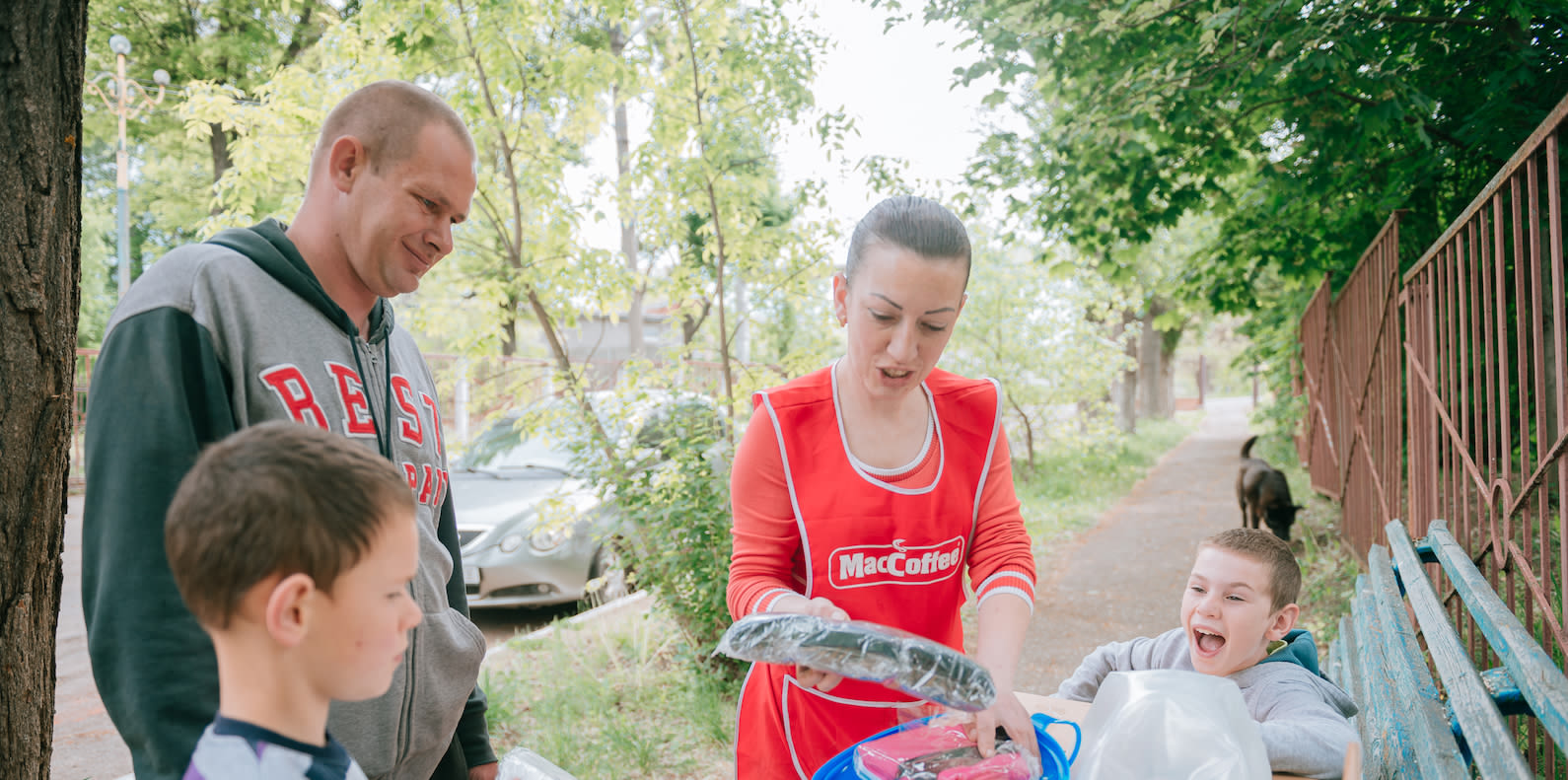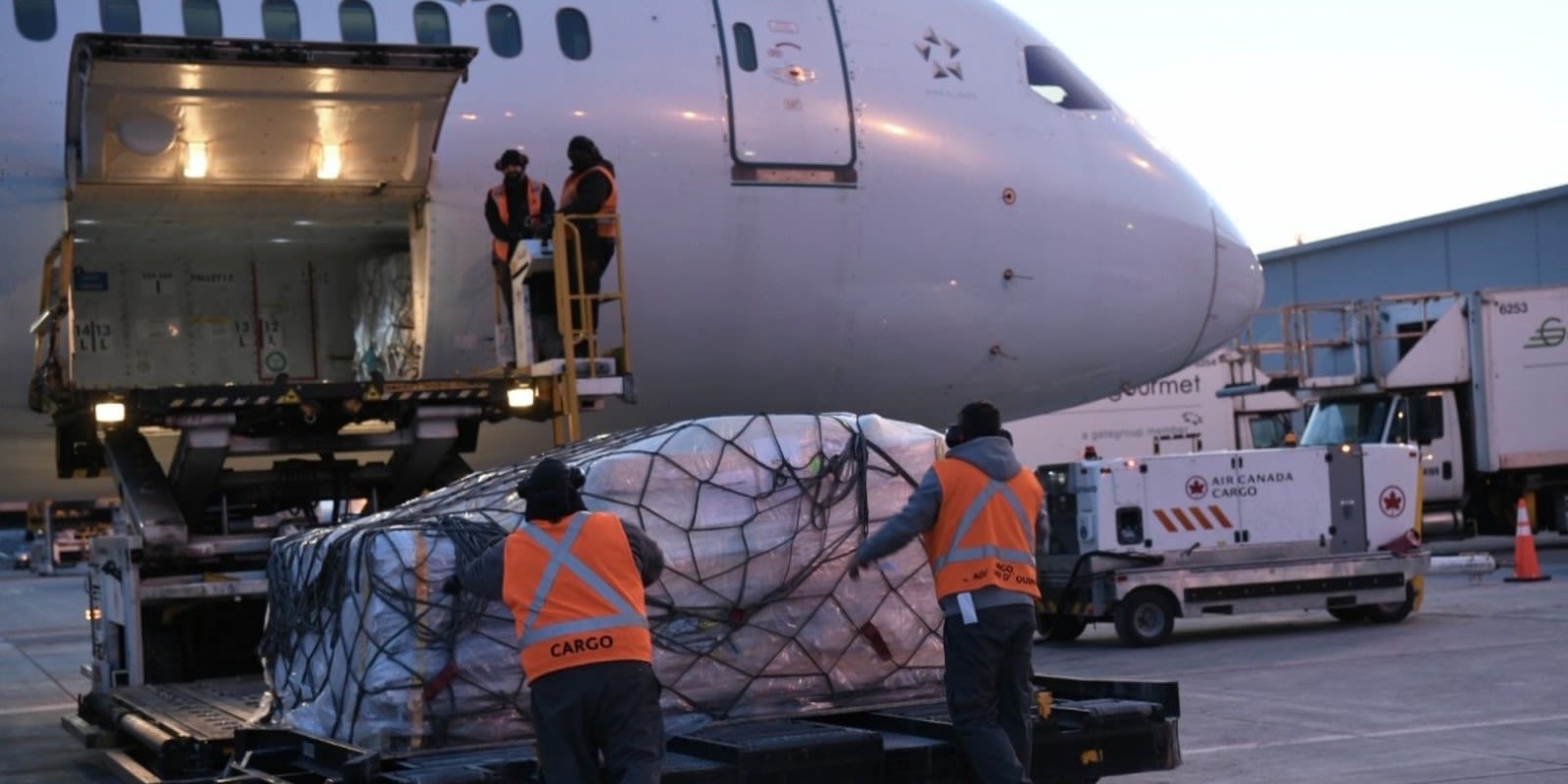
February 26, 2024
Lifecycle of an aid shipment: How Flexport.org and Convoy of Hope’s partnership overcomes logistics challenges
Tags:
Lifecycle of an aid shipment: How Flexport.org and Convoy of Hope’s partnership overcomes logistics challenges

February 26, 2024
Intro
A package that arrives at your door has gone through a journey far longer than what you see on your package tracking details. From manufacturer, to truck, to port, and more, there are a host of steps in the journey that you most likely don’t think about.
A shipment of humanitarian aid may even have additional steps and challenges that need to be considered by the folks handling the cargo. For Flexport.org, it’s strong partnerships that make efficient delivery possible.
We’ve collaborated with Convoy of Hope on a wide variety of emergency responses such as relief after the Turkey and Syria earthquakes in early 2023 and support for crises in South Sudan, Haiti and the Democratic Republic of Congo.
Our biggest project to date has been humanitarian aid relief for Ukraine. From October until now, Flexport.org awarded over $1M in funding to support the shipment of nearly 100 40-foot containers of emergency kits, hygiene products, medical supplies, and more to Convoy of Hope’s partner, We Stand With Ukraine, a charity foundation providing humanitarian aid to residents in Ukraine.
But what exactly goes into the delivery of each one of these containers? Let’s take a look at the lifecycle of an aid shipment, from start to finish.
First steps
A shipment to Ukraine from the Midwest of the U.S. can take 40-45 days on average. Shipments begin with sourcing supplies. Convoy of Hope obtains needed humanitarian supplies through donations or extended partnership programs with donors, then reaches out to Flexport.org with a request for funding support. The Flexport.org team reviews the cargo information and once approved, a quote is prepared and the shipment is booked.
At this point, Flexport’s operations team is looped into the process to handle shipment logistics. They begin by requesting space or booking with the steamship lines. It can take 24-48 hours for the sailing to be assigned and cut off dates for loading the container, bringing it to the port, etc. At the same time, Flexport’s operations team reaches out to the warehouse on the origin side and our trucker to schedule pickup and loading.
The trucker picks up the empty container and brings it to the origin warehouse. Our most common load site with Convoy of Hope is their World Distribution Center in Springfield, Missouri. The Convoy of Hope team works with Flexport’s partner trucker to load the containers from one of their 23 loading docks. Once loading is complete and the container is sealed, the trucker goes to the port or the rail ramp and ingates the container. Meanwhile, Convoy of Hope creates several documents: a packing list with detailed commodity information, a commercial invoice, Letter of Donation, etc. Once all of the information is checked with compliance and all goes well with ingating, the container leaves the origin operations phase as the vessel departs.
Mid-transit
After departure while the vessel is in transit, the Flexport operations team sends a pre-alert, or a message to the Flexport partner in the region, Convoy of Hope’s receiver in the region, Convoy of Hope, and the Flexport.org team with all the shipping documents and schedule information. This way, when the container arrives, everyone is ready to clear customs. For a Ukraine shipment, the Flexport.org team based in Europe handles operations on arrival.
Arrival and Delivery
As soon as containers arrive at the port, we’re on the clock.
Once the container arrives in Hamburg, Germany, it is moved to Austria via rail. Flexport’s partner, SCHNEIDER + PEKLAR, transloads the container’s goods into trucks and moves the pallets of supplies to Ukraine across multiple borders. Finally, SCHNEIDER + PEKLAR deliver the goods to We Stand with Ukraine, who then distributes to those in need in Ukraine.
In total, our shipments with Convoy of Hope have delivered 3.4 million pounds of aid to impact hundreds of thousands of people in need on the ground.
Challenges
Shipping into countries in crisis, like Ukraine, requires adaptability. For Ukraine, war risk means changing customs regulations, shifting areas where aid can be delivered, working in accordance with U.S. and EU compliance regulations, and the need to transport cargo through other European countries due to the lack of a functioning ocean container port in Ukraine. Additionally, in emergency situations, there may be a shortage of trucking or air capacity we need to work around. Lastly, in humanitarian aid, there is little lead time between an emergency and when the aid is needed. There is little long-term demand planning, as no one knows when and where the next natural disaster will occur. Communication is critical. If one factor changes, it affects everything else along the way. It emphasizes the importance of building a strong supply chain ahead of time without the luxury of extensive pre-planning.
Why Partnerships Matter
These factors are out of our control and often unforeseeable, so trusted and flexible partners are essential to success. Partnerships like the one we have with Convoy of Hope help overcome these hurdles. Convoy of Hope is one of the most experienced exporters of aid in the U.S., and they have strong, local connections around the world. They run a robust yet adaptable supply chain. Flexport.org is honored to support Convoy of Hope’s global aid programs and leans on their vast partnership network. In turn, Flexport.org provides operational expertise, visibility through technology, and funding through the Flexport.org fund.
The end result is a shipment lifecycle that is efficient and effective, from start to finish.
About the Author

February 26, 2024





